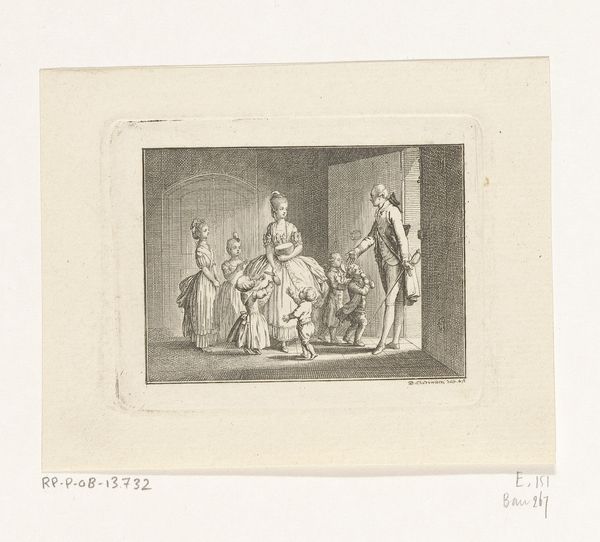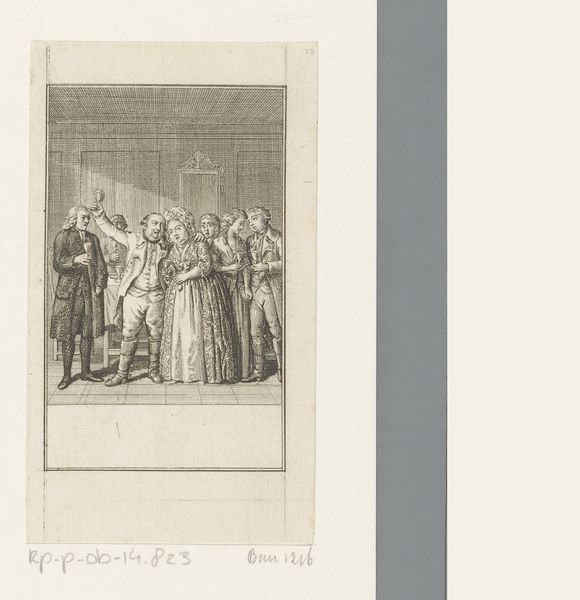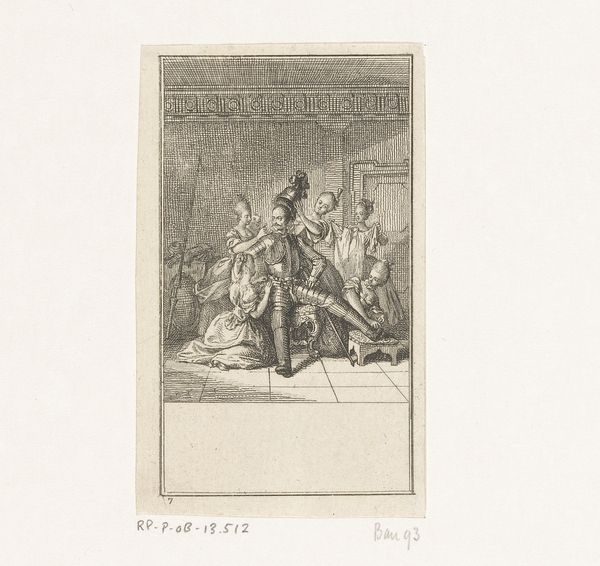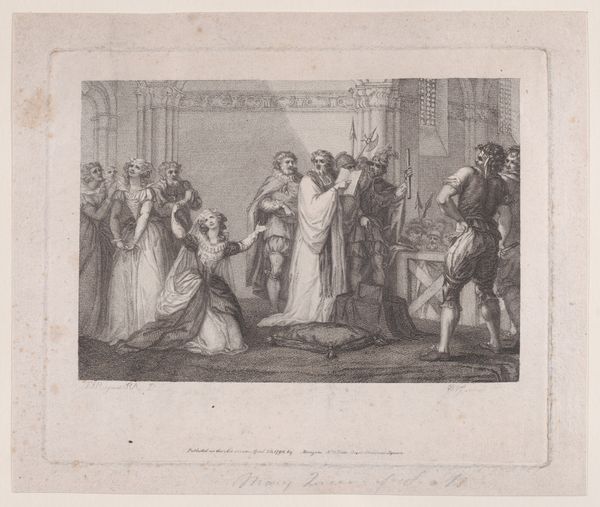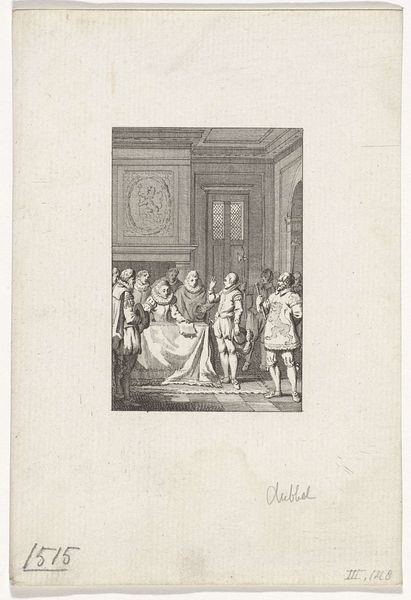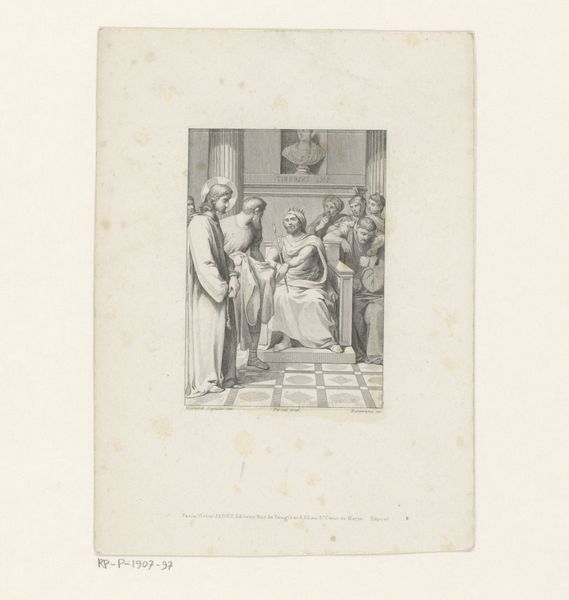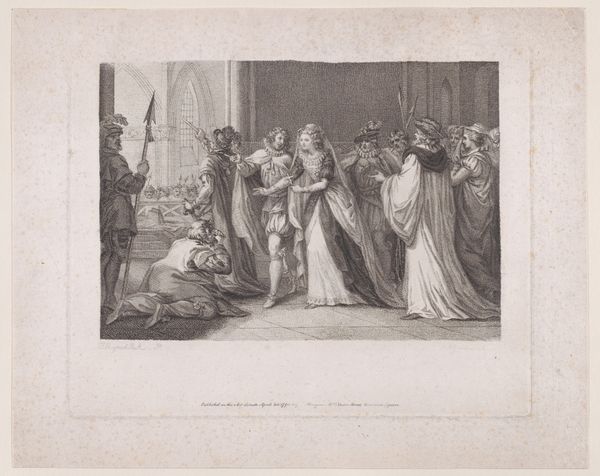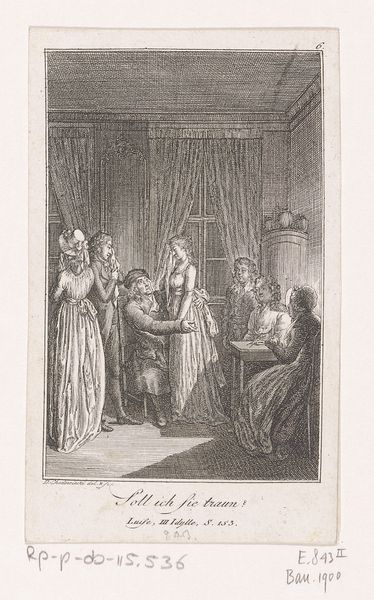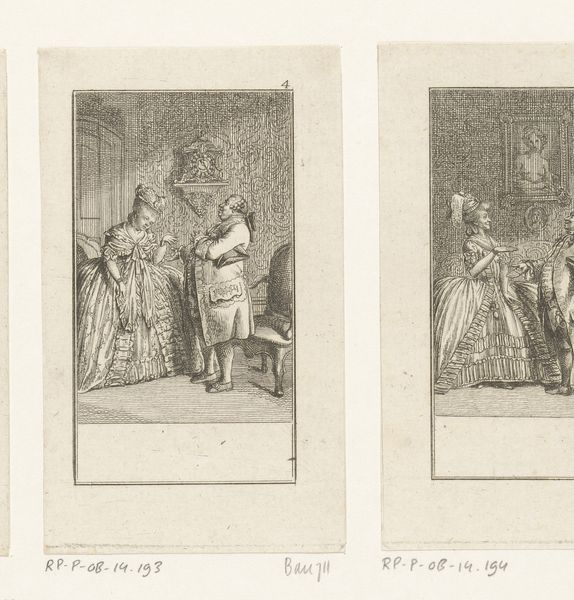
Dimensions: height 94 mm, width 55 mm
Copyright: Rijks Museum: Open Domain
Curator: Welcome. Here we have an engraving by Daniel Nikolaus Chodowiecki, created around 1770. The title translates to "Don Quixote Beside a Weeping Woman." Editor: It strikes me as a study in contrasts. Light pencil work, a pale palette... the delicacy of the scene feels almost at odds with the rather weighty subject matter. Curator: Indeed. Chodowiecki, working in the Enlightenment, used engravings like this to circulate ideas, making art accessible. Think of it as a very early form of illustrated news or a book excerpt, tackling complex themes like those explored in Cervantes’s novel. Editor: It’s fascinating how this “old engraving style”, as one might call it now, serves that purpose. Each line etched into the plate represents a decision, a focused labor that translates to dissemination. Do you know anything about what papers he liked to work with? Curator: Sadly, such details regarding particular paper brands used in Chodowiecki’s printing process are quite scant, although generally papers of the period would have been primarily sourced through linen-based rag processing in the low countries and Italian states, so it is likely he employed this medium in line with available print-making trade across Europe at the time. I understand what you are aiming at; he probably wouldn't see any distinction, since for him it was a tool for conveying more meaningful historical messages or genre painting from life. And to consider its history – think of the skilled artisans required for its execution. That in itself elevates it. Editor: Perhaps it speaks to how art institutions shape what we value as "high art". Focusing on process reminds us about collective creative effort. Curator: Precisely. These engravings allowed philosophical concepts embedded within popular novels like *Don Quixote* to engage a broader public, influencing social discourse in a time of immense political change. The artwork isn't just about the scene itself; it's about the act of distribution and engagement. Editor: So it serves a vital function, a means to expose greater groups of people to art's inherent properties through an alternative distribution medium outside of exhibitions. Curator: Exactly. Now, thinking about his choices, Chodowiecki had social goals but how successfully would such images perform against painted formats among contemporary audiences, especially considering color. Editor: That's a crucial question that brings in so much of the history to this engraving! Thanks for that insightful historical interpretation and those helpful contextualizations, you have successfully illuminated the social function as much as the material processes involved.
Comments
No comments
Be the first to comment and join the conversation on the ultimate creative platform.
